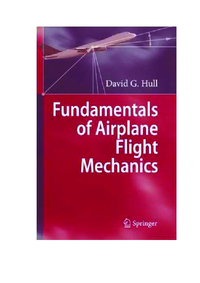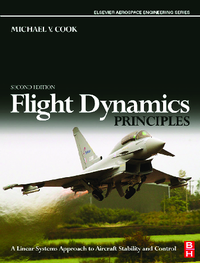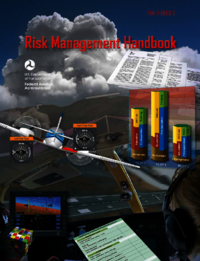Categoría "aviación"
Se han encontrado 3 Coincidencias
Fundamentals of Airplane Flight Mechanics
79 Visitas | 95 Descargas | 2014-05-08 16:21:40 | raulito
Flight mechanics is the application of Newton’s laws (F=ma and M=I) to the study of vehicle trajectories (performance), stability, and aerodynamic control. There are two basic problems in airplane flight mechanics: (1) given an airplane what are its performance, stability, and control characteristics? and (2) given performance, stability, and control characteristics, what is the airplane? The latter is called airplane sizing and is based on the definition of a standard mission profile. For commercial airplanes including business jets, the mission legs are take-off, climb, cruise, descent, and landing. For a military airplane additional legs are the supersonic dash, fuel for air combat, and specific excess power. This text is concerned with the first problem, but its organization is motivated by the structure of the second problem. Trajectory analysis is used to derive formulas and/or algorithms for computing the distance, time, and fuel along each mission leg. In the sizing process, all airplanes are required to be statically stable. While dynamic stability is not required in the sizing process, the linearized equations of motion are used in the design of automatic flight control systems. This text is primarily concerned with analytical solutions of airplane flight mechanics problems. Its design is based on the precepts that there is only one semester available for the teaching of airplane flight mechanics and that it is important to cover both trajectory analysis and stability and control in this course. To include the fundamentals of both topics, the text is limited mainly to flight in a vertical plane. This is not very restrictive because, with the exception of turns, the basic trajectory segments of both mission profiles and the stability calculations are in the vertical plane. At the University of Texas at Austin, this course is preceded by courses on low-speed aerodynamics and linear system theory. It is followed by a course on automatic control.

Flight Dynamics Principles
85 Visitas | 105 Descargas | 2014-05-08 16:27:01 | raulito
It is ten years since this book was first published and during that time there has been a modest but steady demand for the book. It is apparent that during this period there has been a growing recognition in academic circles that it is more appropriate to teach “Aircraft stability and control’’ in a systems context, rather than the traditional aerodynamic context and this is a view endorsed by industry. This is no doubt due to the considerable increase in application of automatic flight control to all types of aircraft and to the ready availability of excellent computer tools for handling the otherwise complex calculations. Thus the relevance of the book is justified and this has been endorsed by positive feedback from readers all over the world. The publisherwas clearly of the same opinion, and a second editionwas proposed. It is evident that the book has become required reading for many undergraduate taught courses, but that its original emphasis is not ideal for undergraduate teaching. In particular, the lack of examples for students to work was regarded as an omission too far. Consequently, the primary aim of the second edition is to support more generally the requirement of the average undergraduate taught course. Thus it is hoped that the new edition will appeal more widely to students undertaking courses in aeronautical and aeronautical systems engineering at all levels.

Risk Management Handbook
64 Visitas | 63 Descargas | 2014-05-29 02:49:28 | raulito
This handbook is a tool designed to help recognize and manage risk. It provides a higher level of training to the pilot in command (PIC) who wishes to aspire to a greater understanding of the aviation environment and become a better pilot. This handbook is for pilots of all aircraft from Weight-Shift Control (WSC) to a Piper Cub, a Twin Beechcraft, or a Boeing 747. A pilot’s continued interest in building skills is paramount for safe flight and can assist in rising above the challenges which face pilots of all backgrounds.
Contribuir
Usted puede contribuir con Libros UCLV, es importante para nosotros su aporte..
Contribuir